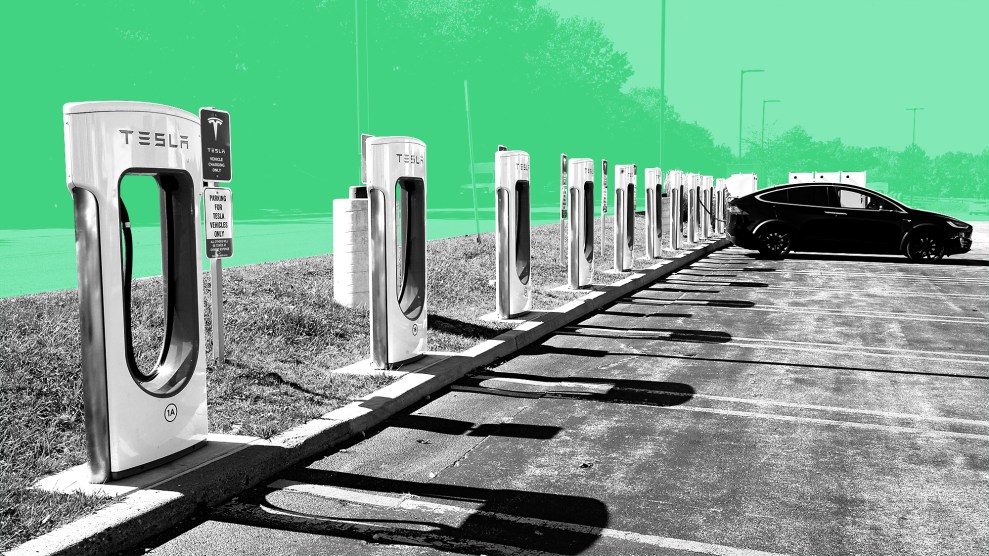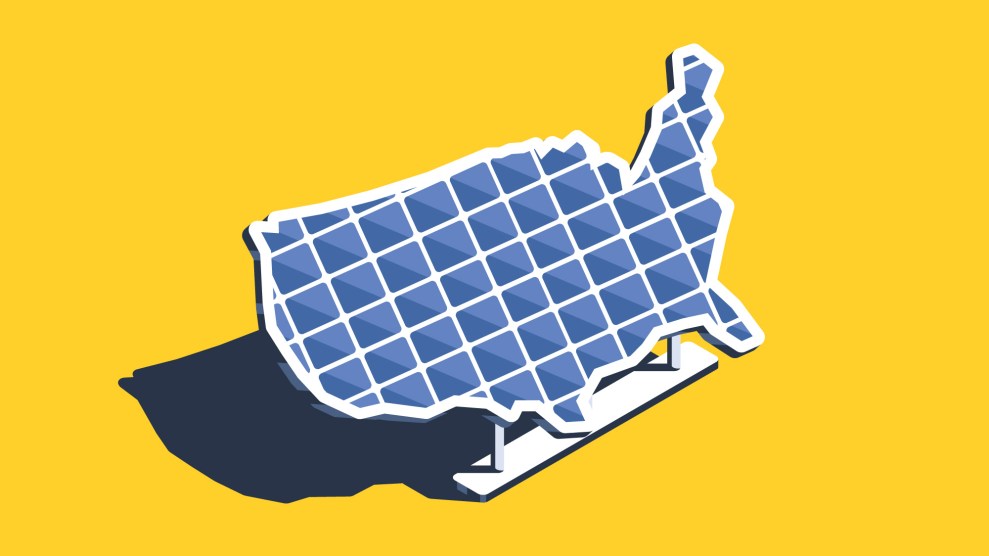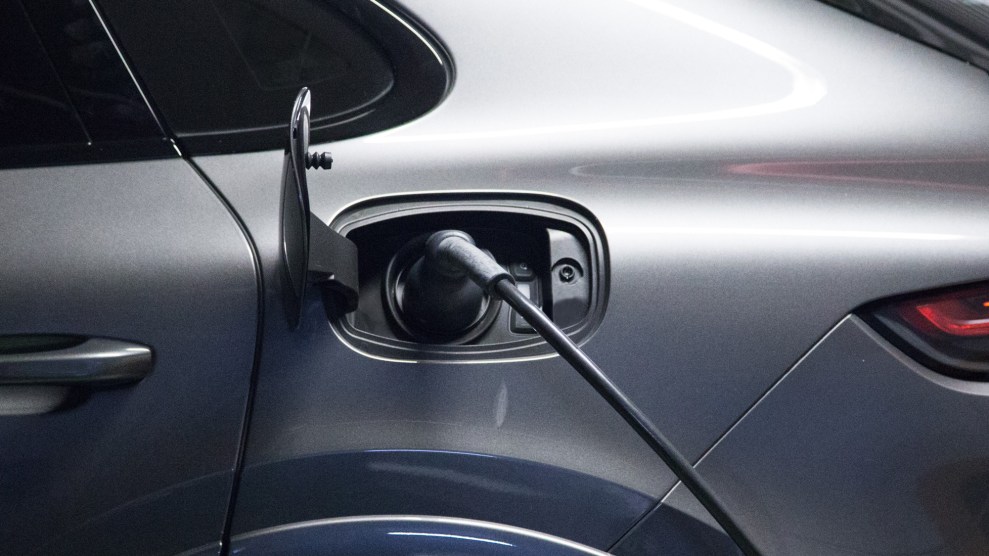
Mother Jones; Lori Van Buren/Albany Times Union/Getty
Rolling up to a Tesla charging port, Illinois Republican state Sen. Dan McConchie grimaced that wheelchair users like him couldn’t use it—or any of the others at the gas station where he filmed his Instagram reel. They’d all been placed on a raised surface that he couldn’t readily reach. McConchie introduced a state bill to improve relevant accessibility standards, including electric car chargers. But it’s a national problem: Electric vehicle charging stations are often inaccessible, despite being designed and built decades after the Americans with Disabilities Act became law.
By April 2023, the Department of Energy reported, there were more than 140,000 public EV charging ports in the US, up from around 80,000 just three years earlier. The number of charging ports accessible to disabled drivers isn’t easy to pin down, an issue in itself; Department of Transportation data estimates that half of disabled adults under 65, some 10 million people, drive themselves around. By 2030, there will be more than 25 million electric vehicles on US roads, according to industry group Edison Electric Insitute. That includes a growing share of more affordable plug-in hybrids, driving even more demand for charging infrastructure. But for drivers with disabilities, inaccessible chargers make it a lot less appealing to switch: In a 2022 UK survey, though two-thirds of disabled drivers planned to go electric, most—more than 70 percent—said concerns about inaccessible infrastructure factored in. And in a society that considers EVs key to a more sustainable future, the spread of inaccessible chargers signals that disabled people have been left behind.
Adam Lubinsky, of New York–based architecture and design firm WXY Studio, has worked with New York state to find ways to make future EV charging locations more accessible. “If we really want to move the needle and get to a place where we’re really driving electric vehicles, we have to put them in the public realm,” Lubinsky said. In a city like New York, that means placing them on sidewalks, so residents of different neighborhoods have reliable access. “Once they’re in the public realm, we need to make sure they’re as universally accessibly designed as possible.”
Public charging stations provided by private entities, like the more than 2,000 operated by Tesla, are supposed to be accessible, according to the US Access Board, an independent federal agency focused on making infrastructure and services more accessible for disabled people. The agency is developing enforceable accessibility rules for charging stations, but there’s no estimate for when those standards will come into force, says Juliet Shoultz, an Access Board transit engineer and accessibility specialist who helped develop its accessible design recommendations for EV charging stations. Meanwhile, nothing stops firms like Tesla, real estate developers, or local governments from reaching out to the Board for technical assistance.
The devices themselves, not just their locations, can be made more accessible, says Dak Kopec, a University of Nevada, Las Vegas architecture professor who focuses in part on how different health conditions shape our ability to use the built environment. Kopec has concerns about how aging people, or those with disabilities that cause muscle weakness, such as multiple sclerosis, would be able to operate the charging cord—especially while balancing something like a walker.
“These are all things that need to be considered as we start looking at the design of these stations,” Kopec said.
Shoultz also looked to existing, enforceable requirements—not specific to EV chargers—under the Americans with Disabilities Act, the Rehabilitation Act, and the 1968 Architectural Barriers Act. Under those rules, chargers have to be at a height that allows people using mobility devices to reach the power cable; they also need a clear and wide path that lets people with walkers, for instance, get to them. Chargers that rely on displays need speech output for people with low vision, and other communication features for people who are Deaf or hard of hearing. Under the ADA, for example, the highest operable part of a charging station shouldn’t be more than four feet off the ground. As with many inaccessibility issues, Shoultz says that enforcement “would probably be by somebody filing a sort of some sort of complaint.”
Coming up with more effective ways for disabled people to access EV chargers isn’t always straightforward. Many are on raised platforms in parking lots. Car-to-car differences mean accessible parking spots can’t necessarily become EV stations. Building more municipal chargers on sidewalks near pedestrian ramps could let wheelchair users plug in more easily. These chargers would also help clear sidewalks blocked by the long, hefty cords of household chargers used by some drivers without garages.
Charging stations aren’t the only accessibility issue for electric vehicles: As Business Insider reported last year, there isn’t a fully wheelchair-accessible EV, with a large door opening and entry-exit ramp, on the American market. (The more accessible Volkswagen ID Buzz won’t launch in the US until almost 2025.)
That’s no reason to delay the push for accessible EV charging, Kopec says: “Retrofitting costs more than simply doing it the right way to begin with.”













